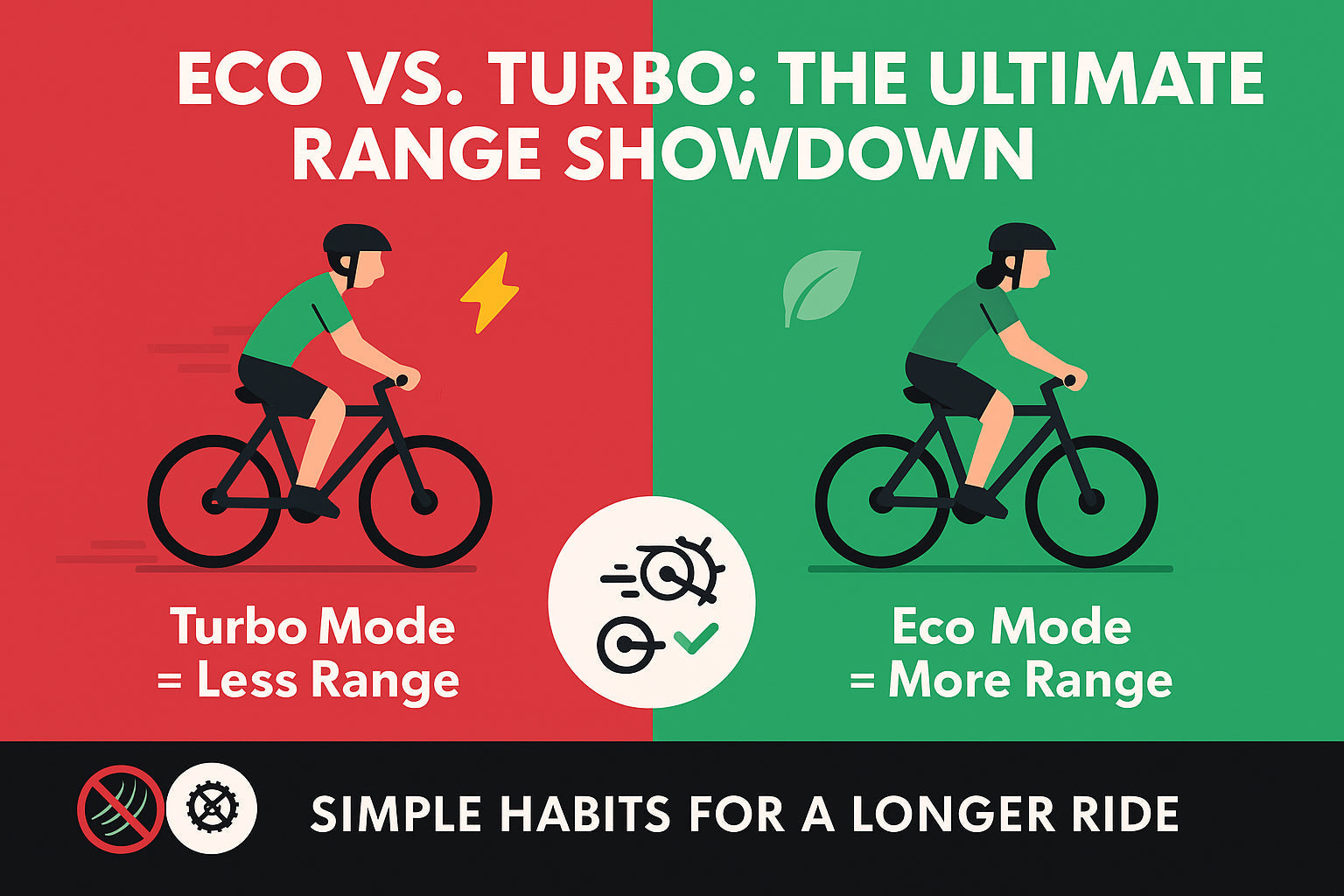One of the greatest freedoms of an e-bike is the ability to choose your own level of effort. With a simple tap of a button, you can shift from a gentle assist to a powerful boost, but this freedom comes with a trade-off. The choice between Eco mode and Turbo mode is the single biggest factor in determining your e-bike’s range.
Beyond just the assist level, a little-known secret to maximizing your miles is your cadence—or how fast you pedal. By understanding the relationship between these two factors, you can stop guessing and start riding with confidence, knowing you have the power to control your battery life.
The Power-Play: How Pedal Assist Levels Work
Think of your e-bike’s pedal assist levels like the gas pedal in a car.
- Eco Mode (The “Sip”): This is your bike’s most efficient setting. It provides a minimal amount of power, typically multiplying your own pedaling effort by a small factor. It’s perfect for flat terrain, calm days, and when you’re looking to get a solid workout while still making your ride a bit easier. Eco mode sips power from the battery, giving you the longest possible range.
- Turbo Mode (The “Gulp”): This is your bike’s top-end setting. It provides the maximum amount of power, often multiplying your effort by a factor of 3 or 4. It’s perfect for climbing steep hills, accelerating quickly, or simply cruising with minimal effort. But Turbo mode is a power hog. It draws a huge, continuous current from the battery, which can drain your range by as much as 50% compared to using Eco mode.
The key to longer range is simple: use the lowest assist level that meets your needs. Turbo is there for a reason, but it should be a tool for specific situations, not the default setting for your entire ride.
The Secret to Efficiency: Why Your Cadence Matters
Cadence is how many times per minute you turn the pedals. An e-bike motor has a "sweet spot" for efficiency, much like a car engine has a most fuel-efficient RPM.
- High Cadence (Pedaling Fast): Your e-bike’s motor is most efficient when you're pedaling in a higher gear, at a higher cadence (faster pedaling speed). A good target for a comfortable and efficient cadence is between 70 and 90 RPM. This feels like a comfortable spinning motion, not a slow, grinding push.
- Low Cadence (Pedaling Slow): If you pedal slowly in a high gear, you force the motor to do a lot of work at low RPM. This requires it to pull a huge amount of torque from the battery, which is a major power drain. It’s like trying to accelerate a car in fifth gear from a complete stop.
Your e-bike is designed to help you pedal faster, not to do all the work for you. By keeping your cadence in the sweet spot, you allow the motor to work at its most efficient level, saving battery power in the process.
Finding Your Perfect Balance
So, how do you combine pedal assist and cadence for the ultimate range?
Your Range-Boosting Strategy:
- Start in Eco: When you set off, begin in the lowest pedal assist level. You’ll be surprised at how much power it provides.
- Shift Your Gears: Just like a regular bike, use your gears to maintain a consistent, high cadence. If you find yourself pushing hard and pedaling slowly, shift to a lower gear to speed up your legs and help the motor.
- Use Turbo Sparingly: Reserve your high-assist modes for when you really need them—a steep hill, a strong headwind, or a quick acceleration to get through a busy intersection.
- Experiment: Every e-bike is different. Spend a few rides experimenting with your assist levels and cadence. See how long you can stay in Eco mode and still feel comfortable.
By paying attention to how you ride, you’ll not only extend your e-bike’s range but also get a more natural, satisfying riding experience. It’s a win-win for both your battery and your legs.


Share:
Tire Pressure & Tread: The Easiest Wins for More Miles
Lighten the Load: Weight, Aerodynamics & Smart Packing